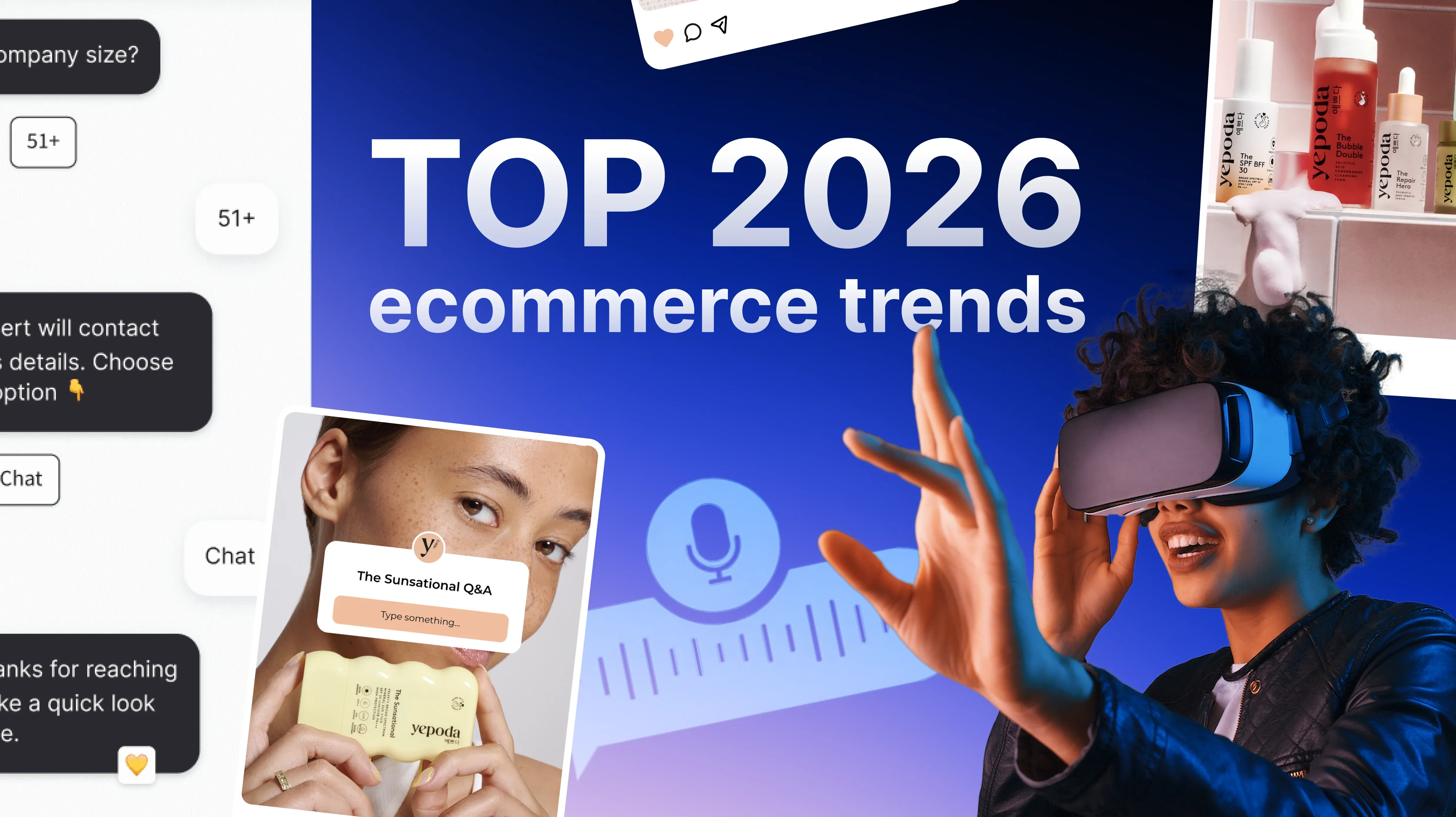
Remember Google Glass? If you don’t, here’s a quick recap: Google announced these smart glasses in 2012, promoting them as a game changer for how humans interact with technology. The company was aiming for the device to replace smartphones, no less.
It didn’t take off. After less than a year on the market, the retail version of Google Glass was discontinued in 2015. Its enterprise edition survived longer, but Google pulled support for it in 2023.
Of course, there wasn’t one single reason why Google Glass failed. The New York Times reported that Sergey Brin and Google’s marketing pushed for a limited release despite the technology being “underbaked” at best. Privacy and security concerns didn’t help either.
But beyond all that, the demand for Google Glass just wasn’t there.
Avoiding this scenario – creating a product that consumers ultimately don’t want or need – is easier said than done. But this is where product validation comes in.
Here’s how to validate a business idea for your product, whether you’re an aspiring startup founder or a seasoned entrepreneur.
Why product idea validation is crucial
Before we dive into how to validate a product idea, let’s acknowledge this: product validation takes time and resources. So, why bother with it?
Besides avoiding the fate of becoming a punchline like Google Glass, here are five more good reasons why you should treat the product validation process as an investment:
Ensuring economic viability. Idea validation will show whether there’s demand for your product and whether you should invest time and money into its full-fledged development. Having proof of product-market fit is also crucial in attracting external investors.
Refining the product idea. Your idea may be good but could be better. Idea validation will reveal your product's shortcomings and how to improve it to achieve a product-market fit.
Understanding your audience. Even the ideas users are initially skeptical about can take off, provided their execution hits right where it matters. That requires a deep understanding of users’ needs, wants, and preferences, however.
Building the initial user base. Launching an MVP as part of product validation helps you gain your first users. They’ll be a source of crucial first-hand feedback – and may bring in your first revenue.
Mitigating risks. Product validation provides you with objective data on the market, target audience, and competitors. This data will reveal potential risks and threats, allowing you to minimize them during development and launch.
How to validate product ideas in 8 steps
Here’s how to validate your business idea, from defining the concept and doing market research to launching and refining an MVP.
Step 1. Conceptualize your product
First, you need to crystallize your product idea. To do it, define:
what problem it solves for the customer
how your product does it
who your product is for
what core features it’ll have.
Great products address specific pain points for their customers. So, conceptualize your product as a solution to a particular problem for a certain type of user.
Step 2. Validate the problem
Are you trying to solve a real problem that indeed gets on people’s nerves? To answer this question:
Analyze whether the market already exists. If it does, consumers already know they need your product – but it also means you’ll have competition to worry about. If it doesn’t, you’ll need to convince them your product is worth their money.
Talk to your potential target audience. To avoid getting led astray by false assumptions, reach out to real people and discuss their pain points.
Turn to industry experts. You can reach out to them during events or on social media and ask questions about the problem you want to solve.
Step 3. Analyze the market
At this stage, you need to verify that your product fits the market and what to expect from its launch. Skipping this step is a sure way to join the 42% of failed startups that shut down because there was no market need for their product.
Here are the four ingredients of comprehensive market research for validating product ideas:
Market size. Identify the total available market, then pinpoint the segment size you’ll be targeting. You can also calculate the serviceable obtainable market, which represents your opportunity size.
Industry trends. Use Google Trends or SEO keyword tools to see what search queries are rising in popularity or already trending. Browse industry blogs and reports to understand what direction your market is moving in.
Competition. Are there products similar to yours in the market? Consider both direct and indirect competitors, their pricing, marketing, value propositions, strengths, and weaknesses. Browse customer reviews to better understand what works and what doesn’t for them. Identify how your product will differentiate from each competitor.
Consumers. Assess the demand side of the market. Browse reports and statistics on consumers in your market, especially regarding their behaviors and spending patterns. Consider conducting surveys yourself.
Step 4. Create customer personas
Who are your ideal users? Create a customer persona for each segment of your target audience. If your idea is innovative and has no market niche, focus your initial effort on a single segment.
A persona is a fictional character that illustrates who you’ll be targeting with your product. It should be grounded in the research on consumers you’ve done in the previous step. Here’s what it should include:
demographics: age, occupation, location, gender, income bracket
psychographics: interests, values, attitudes, personality traits
behavior patterns
needs, goals, and pain points.
Step 5. Test the idea in a real-world setting
To validate a business idea, you’ll need real-world data pertaining specifically to your product concept. Here’s how to test a product idea in a real-world setting:
Conduct surveys and interviews. Reach out to your target audience and ask them questions to gain insights into their behaviors, needs, and goals. Collect both quantitative and qualitative data.
Create a landing page for your product to gauge engagement and gather feedback from potential users. Prompt visitors interested in the product to sign up for a waiting list. Ensure the landing page promotes your product with tutorials, visuals, and videos. Offer incentives for signing up, too.
Set up a fake-door test. In fake-door testing, you promote your product as if it exists already. Once the customer clicks the CTA button, you reveal the truth: the product isn’t here yet. This test allows you to gauge the idea’s potential with CTR and other metrics.
Start a crowdfunding campaign. It’ll help you kill two birds with one stone: you’ll see if there’s actual demand for your idea and attract investment from supporters. That said, this works only for B2C product ideas.
Advertise your product. Start a pay-per-click campaign or post ads on social media – and track engagement. Ad metrics will help you refine your messaging, better understand your target audience, and improve segmentation.
Step 6. Create a PoC and/or MVP
A proof of concept (PoC) is a prototype to test whether a product idea is technically feasible. It’s used internally, so it usually doesn’t take into account the UI and security practices. The whole point is to prove that certain functionality is possible to implement.
You should start with a PoC if you need to:
verify your development approach
confirm the product’s technical feasibility
identify the limitations of your solution
assess resource requirements.
A minimum viable product (MVP), in turn, is a simplified version of your product that can be released into the market. It includes the core functionality that differentiates you from competitors. The MVP should be able to attract early adopters who will provide you with feedback on your product.
We broke down the key differences between PoC and MVP in more detail in our guide on startup stages of development.
If you don’t have the resources to develop a PoC or MVP in-house, you’ll need a reliable development partner. We can be that partner for you.
At DigitalSuits, we help startups and SMEs validate their ideas with MVP development services. Tell us everything about your product idea – and we’ll get back to you with an estimate and approximate timeline.
Step 7. Refine the idea in iterations
Don’t expect to hit the bullseye on your first try. Success isn’t about getting it right from the get-go; it’s about listening to user feedback and refining your product idea through iterations.
To hone your product idea after releasing the MVP, you’ll need data – lots of it. Collect data on user behaviors with tools like HotJar and keep an eye on reviews. Actively seek out user feedback, too, via in-app prompts or email marketing.
Once you have the data, compare it against your hypotheses. Identify what works and what doesn’t in your current product version. Then, push small updates to fix what doesn’t work – and track metrics to understand the impact of the introduced changes.
Focus on high-impact and low-effort changes to secure quick wins. High-impact and high-effort changes can be scheduled for the future.
Step 8. Finalize your findings and prepare for the launch
Armed with all the data you’ve collected during the validation process, analyze it for:
Timing: Is the environment (completion, market trends, etc.) favorable for your product?
Target audience: Are you targeting the right people?
Value proposition: Does your product offer tangible benefits to your target audience?
Differentiation: How does your product differ from competitors?
Core functionality: Does your product solve the customer’s problem with its features?
Product-market fit: Are there enough potential customers willing to pay for your product?
If you deem your product viable after validation, it’s time to create a go-to-market strategy. It should include:
your product’s value proposition
brand positioning and messaging
customer acquisition model (freemium/free trial/etc.)
pricing
marketing strategy
customer onboarding and support.
7 tools for product idea validation
These seven tools will help you secure enough data to validate a product idea.

Google Trends
Google Trends shows you what people search for around the world, including trending topics and historical search data. You can narrow your search by location, time, search type, and category.
Alternatives: Glimpse, BuzzSumo, Exploding Topics
Moz
Analyzing keyword search volume is another way to validate product ideas in the early stages. Moz is one SEO tool to help you gauge search queries’ popularity. Its keywords explorer lets you view monthly search volume, organic CTR, and difficulty for various keywords and key phrases.
Alternatives: Ubersuggest, Ahrefs, Backlinko
Typeform
If you plan to survey your potential users, Typeform is a great form builder tool with comprehensive analytics features. Typeform makes creating sleek, modern forms with great transitions and complex logic ridiculously easy.
Alternatives: SurveyMonkey, JotForm, Google Forms
Mixpanel
If you want to understand how users interact with your MVP, a tool like Mixpanel is irreplaceable. Mixpanel sheds light on every part of the customer journey by tracking conversion and retention rates.
Alternatives: Countly, Quantum Metric, KissMetrics
UserTesting
UserTesting is a platform that connects you with users from your target audience ready to test your product remotely. It allows for collecting both qualitative and quantitative feedback during moderated or unmoderated tests.
Alternatives: Maze, Lookback, Optimal Workshop
Hootsuite
Digging through social media posts to gain reliable insights into your target users can be nearly impossible without a social listening tool like Hootsuite. It allows you to track mentions of specific keywords across multiple social media channels and analyze overall sentiment.
Alternatives: Sprout Social, Mention, YouScan
HotJar
HotJar is a popular heatmap and session recording tool that shows you exactly how users interact with your website. HotJar also comes with survey, user feedback, and interviewing features.
Alternatives: Usersnap, Lucky Orange, Attention Insight
5 mistakes to avoid in your validation strategy
How you approach product validation can make or break the reliability of your findings. Here are five mistakes to be mindful of if you want validation results to be trustworthy.
#1 Relying on false assumptions
When you validate your business idea, you’re bound to make assumptions about your target users, competitors, and the market itself. This is natural and even encouraged; however, you should be mindful of those assumptions and treat them as hypotheses. That means testing your key assumptions to confirm or refute them early in the validation process.
#2 Ignoring “inconvenient” data
Statistics matter more than a gut feeling. However, when data shows an idea doesn’t have the potential to be viable, some entrepreneurs choose to ignore it. Or, they underplay its significance. Instead, they cherry-pick the data that’s in line with their assumptions, even if it’s not representative enough.
#3 Not testing your brand positioning
How you present your product matters, arguably, more than the product itself. Users encounter your marketing before they test your product or even learn about its features. So, ensure your brand positioning and marketing hit the right spot to attract your potential customers.
#4 Focusing on your idea in customer surveys or during interviews
When you discuss your idea with potential customers, there’s a good chance you won’t get 100% honest answers. So, when you reach out to them, discuss their lives instead of your product. Focus your questions on their past experiences rather than future intentions – and, of course, focus on listening instead of talking.
#5 Using an unrepresentative or limited sample
When seeking out your target users’ opinions, especially at the early stage, your sample should reflect the diversity of your future audience. It also has to be large enough to prevent skewed results. If your sample isn’t large or representative enough, expand your search online or talk to experts.
Final thoughts
Validating product ideas helps you avoid investing an exorbitant amount of time and resources into building and launching a product that people aren’t willing to pay for. That’s why product validation should be at the top of your to-do list.
That said, idea validation can be tricky: you may think data supports the idea’s viability only to build the product and see no substantial demand for it. These false positives are usually the result of focusing on the wrong metrics, ignoring some facts due to confirmation bias, or relying on false assumptions.
Need a fresh perspective and solid expertise to validate your business idea while avoiding common pitfalls like these? DigitalSuits can take on product idea validation as part of our product discovery services. We’ll help you identify if your product fits the market, confirm its feasibility, and plan the development if necessary, ultimately saving you valuable time and costs.
Let’s talk about your product idea.







































Was this helpful?
0
No comments yet